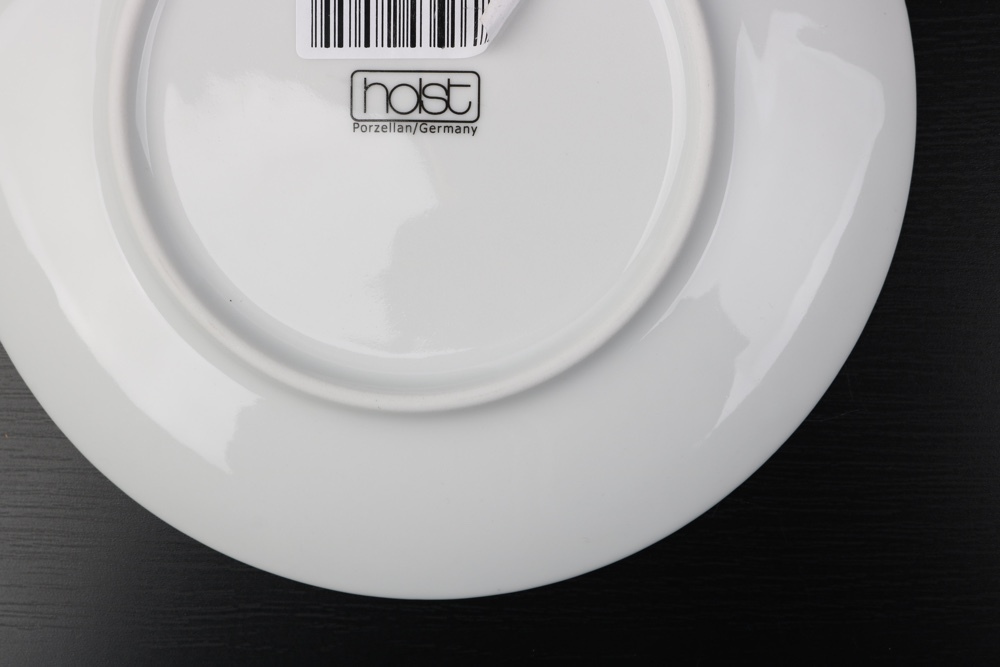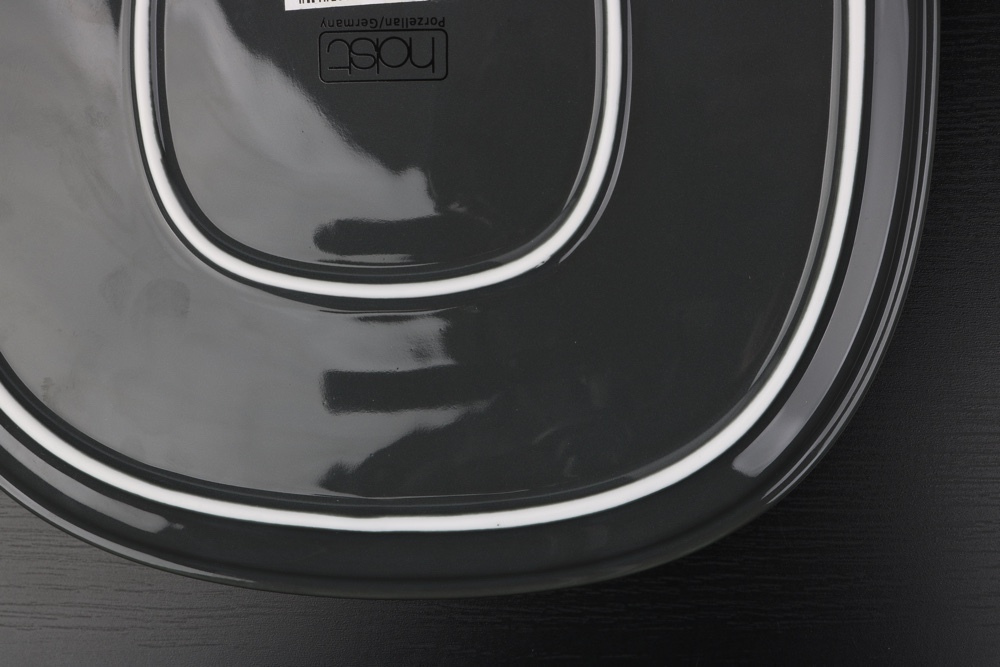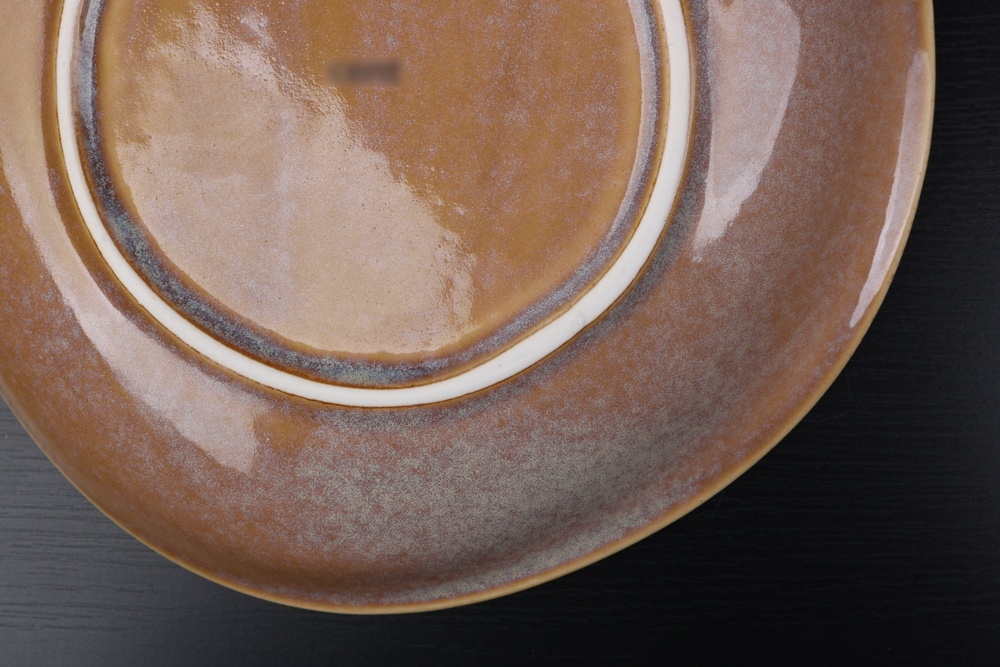Body colour
Body colors of porcelain and ceramic tableware
| Porcelain 1.350 °C | Porcelain 1.380 °C | Stoneware 1.260 °C | Ceramics 1.210 °C |
(click on the picture to enlarge)
Ceramic masses differ in different compositions of clay minerals, feldspars and quartzes. These clay minerals can be classified according to various criteria and assigned a significant coloration
- Porcelain is white and dense
- Stoneware is white and porous
- Stoneware is colorful and dense
- Earthenware is colored and porous
Due to increasing imports from various countries of purchase, more and more body colors appear on our traditional market. These are wrongly called glaze colors, which is technically wrong in most cases, because the glaze itself should always be transparent.
Whether the coloring of an article is dependent on the glaze of the body color can often only be judged by experts based on laboratory tests. While manufacturers from Germany and most of Eastern Europe work with compositions of European raw materials, the Asian region offers far more raw materials and compositions. Such changes in the glaze are also called pigmentation.
Description "White
The term "white" is commonly used in the industry for undecorated porcelain. The white price is listed by most manufacturers as "column 1" or "column A". But white is not white. The white of a premium brand such as "Bauscher Weiden" does not correspond exactly to the white of another premium brand such as "Villeroy & Boch". Even within one brand and one and the same series, there can be color differences if the production of the tableware is staggered.
Such production-related differences result from the unpredictability of the mineral raw materials and the tolerances that can occur during hard firing.
How do you recognize as a non-specialist (commercial) porcelain?
- Porcelain has a white body color. Look for an unglazed area (e.g. the adjusting ring at the bottom). If the color is grayish, brownish or yellowish, it is ceramic. See also our comparison pictures below
- Porcelain has a minimal porosity. The setting rings and unglazed surfaces must be completely smooth
- Porcelain has a high, bright sound. Place one plate on your hand and snap the edge with the finger of the other hand. If the sound is muffled, it is ceramic. However, this method is reserved for more experienced users
- Porcelain is denser and heavier than ceramic. Compare a plate of the same size and thickness
- Porcelain is scratch-resistant. Cut back and forth with a used knife on the bottom side. No cutting marks should be visible
- Recommendation in case of doubt: Let the supplier guarantee the quality "porcelain > 1,320 °C" in writing and take him into the catalog liability




